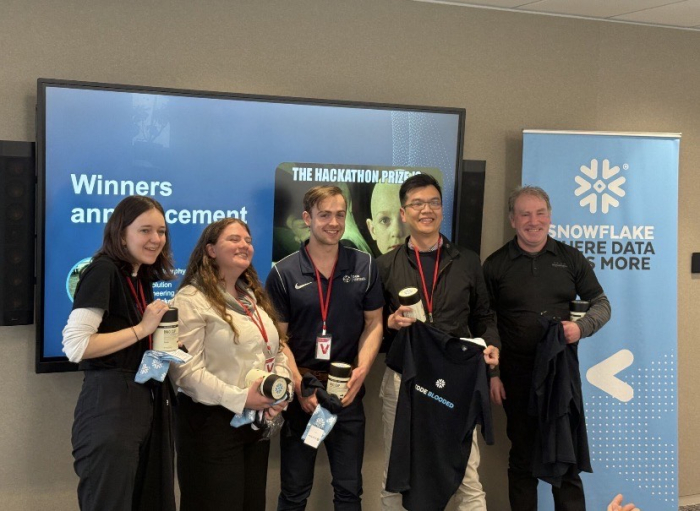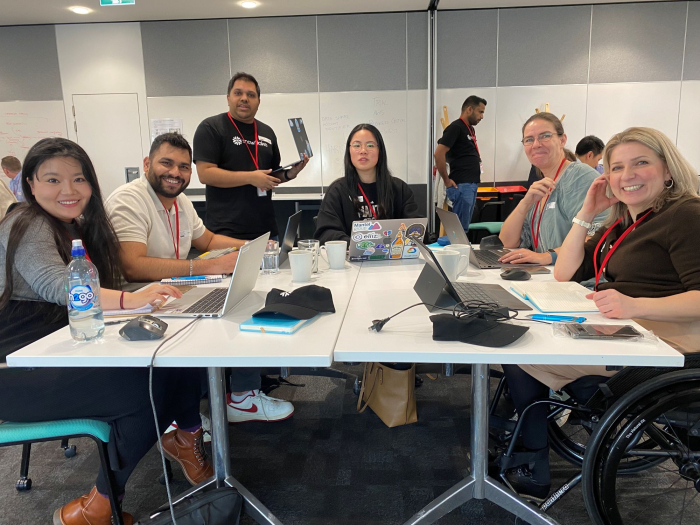Many New Zealand businesses are rushing to experiment with artificial intelligence but risk hitting a dead end if their investments aren’t anchored to core business needs.
That’s the warning from Hayden Leith, Head of Data and AI Advisory at Qrious, the business unit within Spark helping dozens of Kiwi enterprise customers with their AI adoption strategy.
“Many have trialled AI, but the innovation funds are running out,” he says.
“They haven’t looked beyond their proof of concepts to see what needs to be true to make them scalable and deliver enduring value, so they are stalling.”
Part of that is down to an age-old problem in business, the temptation to pursue shiny new tools or technologies without considering whether these directly address the company’s most significant problems or opportunities.
“Don’t go out to teams in the organisation and ask them what AI use cases they can think of,” Leith advises.
“All it does is get them thinking about reverse engineering a problem that will fit that AI use case.”
Instead, he suggests they start by understanding the biggest problems that need to be solved as well as unfulfilled opportunities to boost productivity, grow revenue, and improve customer satisfaction. Without a clear value proposition, solid measurement, and a plan for how pilots will lead to something bigger, most AI pilots hit a wall.
 Members of Spark were recently part of the winning teams at the AI Snowflake Hackathon in both Auckland and Wellington.
Members of Spark were recently part of the winning teams at the AI Snowflake Hackathon in both Auckland and Wellington.
A business-first, value-led approach
Qrious has developed a pragmatic, business-centric approach to help New Zealand firms get value from AI.
The process starts with understanding the organisation’s strategy and desired outcomes. Qrious typically runs executive coaching workshops to demystify AI and clarify what matters for their clients’ specific business and industry.
“What am I trying to achieve over the next three years? What are the value domains for my business?” Leith explains.
This all leads to developing what Leith calls AI product canvases. They outline how AI might align strategically with the organisation’s aims, what the benefits of AI adoption could be, and how outcomes could be measured. Crucially, this process often reveals that AI is not the answer. Sometimes, more basic business process automation or data integration is more appropriate.
From playthings to productivity
Leith says this approach helps avoid the “AI trap”, which sees businesses chasing technology for its own sake, often resulting in technical debt and disappointing results. Instead, Qrious helps its clients drive toward use cases that are “high impact, strategically aligned” while conforming to data and AI governance frameworks. If an organisation doesn’t have those in place specifically for AI, Qrious can assist in developing them.
The results, he adds, can be dramatic, with many clients achieving large productivity improvements through the use of AI.
“The way we help clients approach AI creates momentum within the business and proves success, which can unlock future funding,” he points out.
 Members of Spark were recently part of the winning teams at the AI Snowflake Hackathon in both Auckland and Wellington.
Members of Spark were recently part of the winning teams at the AI Snowflake Hackathon in both Auckland and Wellington.
Fast-growing use cases for AI:
- Generative BI (business intelligence): Using ChatGPT-like AI tools to ask questions and quickly receive answers, based on high-quality, internally generated data. It is proving to be a powerful way to query multiple sources of institutional knowledge to create richer and more useful business intelligence.
- Content creation: AI is being used for creating copy, emails, or marketing material, reducing the time required to launch campaigns and taking a lot of the manual work out of managing digital channels.
- Predictive AI: Businesses are applying machine learning tools for scenario modelling, forecasting, trend-spotting, and receiving recommendations that can inform business planning.
- Computer vision and IoT: AI can be used to analyse camera feeds or sensor data for operational or safety purposes and to improve productivity in areas like manufacturing and agriculture. Internet of Things sensors are offering ever more sources of real-time data that AI can make sense of.
- Process augmentation/automation (human-in-the-loop): AI is being used to enhance human-driven processes by increasing speed, accuracy, consistency, or decision-making quality. A common example is customer service, where AI drafts chat or email responses for agents to review and send.
Get ahead of the curve
The AI boom has generated a lot of excitement and a good deal of FOMO (fear of missing out), Leith says.
“I get a lot of executives asking me, ‘Am I behind the curve?’ In reality, few organisations are doing this at scale at the moment. But if you take a step back and look at the nation as a whole, in terms of our broader adoption and application of AI to improving productivity, we’ve got a lot of work to do.”
Leith’s advice to business leaders feeling pressure to “do something” with AI is to think about the outcomes they are trying to achieve as an organisation.
“Spend a disproportionate amount of time articulating and being clear on what the benefit of doing this is. And don’t just do this with the technology team, pull in people from across the business. The more engaged they are, the greater the prospects of AI having an impact.”
Careful alignment to business purpose, a relentless focus on value, and robust measurement are the factors that will turn AI from a costly experiment into a sustainable engine of productivity and competitive advantage.
Learn more about Spark | Qrious Data and AI: Evolving customer enquiries with Spark and AI automation.






